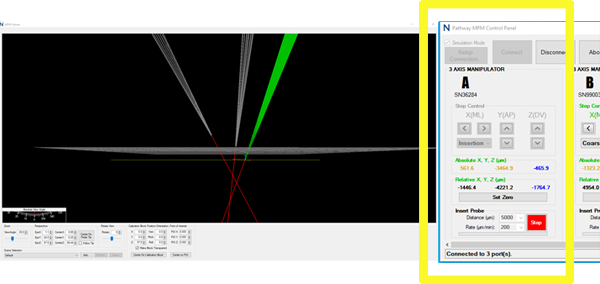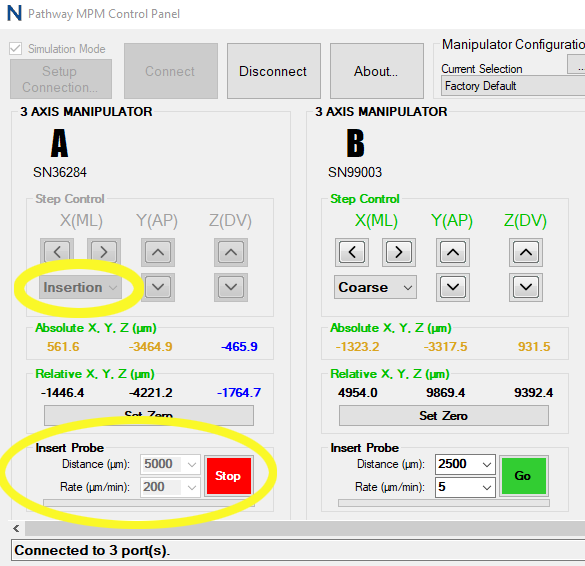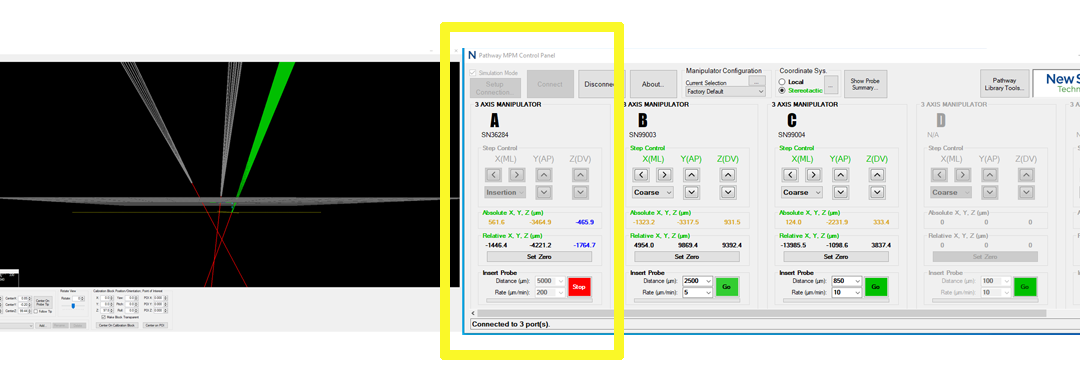Several labs have recommended the article in Scientific Reports by researchers at the Hungarian Academy of Sciences in Budapest as convincing evidence for the benefits of inserting silicon probes slowly into the brain. Here’s the abstract:
Neural probes designed for extracellular recording of brain electrical activity are traditionally implanted with an insertion speed between 1 µm/s and 1 mm/s into the brain tissue. Although the physical effects of insertion speed on the tissue are well studied, there is a lack of research investigating how the quality of the acquired electrophysiological signal depends on the speed of probe insertion.
In this study, we used four different insertion speeds (0.002 mm/s, 0.02 mm/s, 0.1 mm/s, 1 mm/s) to implant high-density silicon probes into deep layers of the somatosensory cortex of ketamine/xylazine anesthetized rats. After implantation, various qualitative and quantitative properties of the recorded cortical activity were compared across different speeds in an acute manner…Our findings suggest that advancing rigid probes slowly (~1 µm/s) into the brain tissue might result in less tissue damage, and thus in neuronal recordings of improved quality compared with measurements obtained after inserting probes with higher speeds.
Fiáth, R., Márton, A.L., Mátyás, F. et al. Slow insertion of silicon probes improves the quality of acute neuronal recordings. Sci Rep 9, 111 (2019). Read the paper in Scientific Reports
MPM System user experience
In Alex Kwan’s lab at Cornell, Pasha Davoudian set a target of 120 µm/min (2 µm/s) with the MPM System. Pasha typically starts automatic insertion after the probe is far enough into the brain to reliably see spikes, about 100-200 µm.
At the Allen Institute, Josh Siegle reports that they initially were inserting at 100 µm/min (1.6 µm/s), but have since increased to 200 µm/min (3.3 µ/s) without any noticeable change in yield. He adds that the report supports this approach and that they do not plan to go any faster.
Slow insertion speeds with the MPM System: Automatic insertion mode
The MPM System features three modes of motion: coarse, fine, and automatic insertion. Step size and speed are completely programmable for all modes. Driven by New Scale’s patented piezoelectric Squiggle® Motors, the motorized XYZ stage assemblies in the MPM System are ideal for smooth, slow motion. Insertions at such slow speeds can be very time consuming, but the MM system performs this operation automatically in insertion mode, with no operator intervention – except the ability to STOP if required.
“Our Squiggle motor has an intrinsic internal speed reduction, and its open loop speed is much less than other types of direct drive ultrasonic motors,” explained Qin Xu, VP Engineering at New Scale. “This is easier to control for very slow-motion applications.”

MPM System – insertion mode active. Manipulator A is moving at 200 µm/minute. Insertion can be stopped at any time.


